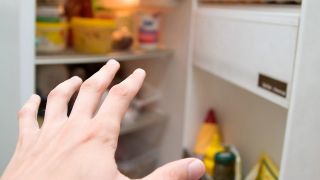DSM
New DSM-5 Disorder Spurs FDA Drug Approval, Expanded Market
A drug-maker’s blunt challenge: “increase the numbers of patients diagnosed.”
Posted February 14, 2015

Last month, the U.S. Food and Drug Administration authorized the use of medication to treat “Binge Eating Disorder.” It was the first such approval of a drug to treat a complex whose inclusion in DSM-5 raised concerns at the time about diagnostic accuracy and the risk of confusion with far more common bouts of overeating.
Vyvanse, the stimulant in question, had previously been authorized solely for the treatment of ADHD and comes with a worrisome track-record. “BED is a complicated disorder,” notes healthcare reporter Elizabeth Whitman in International Business Times, “with too many causes and factors to be treated by a single drug, and both Vyvanse and Shire Pharmaceuticals, the drug’s manufacturer, have troubled histories that include illegal marketing and child suicides.”
In its January 30 press release, the FDA reminded us that Vyvanse (lisdexamfetamine dimesylate) was approved in 2007 as a once-daily med to treat attention deficit hyperactivity disorder "in patients ages 6 and older.” In two subsequent clinical studies that adopted DSM-5 criteria and involved 724 adults with moderate-to-severe binge-eating disorder, participants taking the drug binged fewer days each week than those given placebos. On the basis of such findings, the FDA awarded the new license.
Mitchell Mathis, M.D., director of the Division of Psychiatry Products in the FDA’s Center for Drug Evaluation and Research, called the medication “an effective option to help curb episodes of binge eating,” but the agency’s office of media affairs was rather less confident, with Sandy Walsh admitting in an email: “We have no direct evidence about how Vyvanse works in BED. The exact mechanism of action of the drug in reducing the symptoms of BED is … unknown.”
The press release added that Vyvanse “is a Schedule II controlled substance because it has high potential for abuse, with use potentially leading to dependence,” and “may cause psychotic or manic symptoms, such as hallucinations, delusional thinking, or mania, even in individuals without a prior history of psychotic illness.”
In its October 2012 report on the broadly unsuccessful field trials that sped the inclusion of Binge Eating Disorder in DSM-5 (2013), the APA defined its criteria as involving “discrete episodes in which the individual uncontrollably eats a larger amount than most people would in a similar time and under similar circumstances” (my emphasis). The language was so vague, it raised concern about over-reporting in the trials and, subsequently, near-certain overdiagnosis in the general public. “Discrete episodes” was subsequently revised to suggest for “usually two hours.”
Recent news of the accelerated FDA approval of Vyvanse is a good reminder that the inclusion of a new condition in DSM spurs not just the demand for treatments, but also intense industry pressure for the outward expansion of the disorder’s criteria or goal posts—a process Peter Kramer once dubbed “diagnostic bracket creep.”
“An estimated 2.8 million adults in the U.S. are binge eaters,” noted the Wall Street Journal when citing the FDA’s press release. That makes Binge Eating Disorder already the most-common eating disorder in the United States. For Shire, the drug-maker, “the approval could eventually add ‘several hundred million’ dollars in sales, and help the company reach its goal of $10 billion in yearly sales by 2020, said Flemming Ornskov, the company’s chief executive. Vyvanse is the company’s top-selling drug, notching $1.1 billion of the company’s $4.3 billion in total sales during the first nine months of last year.”
“One challenge,” the Wall Street Journal added candidly: “increasing the numbers of patients diagnosed as binge eaters. Shire estimates that just 3% of Americans with the disease have been diagnosed under the mental-disorder criteria, Dr. Ornskov said.”
If the history of psychiatric diagnoses is any guide, we can anticipate that “3 percent” soon facing intense pressure for upward revision. When that happens, the line between BED and overeating, already hazy and indistinct, will begin to disappear.
christopherlane.org Follow me on Twitter @christophlane




